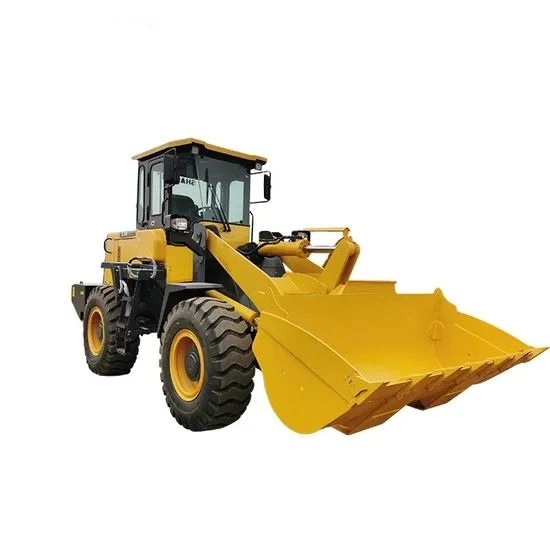The operating weight range of wheel loaders is closely related to their models and specifications. Loaders of different tonnages are suitable for operating scenarios with different weights. The following is a detailed classification description:

I. Applicable weight range by tonnage
Wheel loaders usually take the rated load capacity (unit: ton) as the core parameter. The common classifications and applicable operating weights are as follows:
- Small wheel loaders (0.5-3 tons)
- Rated load capacity: 0.5 tons - 3 tons
- Applicable scenarios: Small construction sites, agricultural operations (such as transporting chemical fertilizers and feed), municipal maintenance (such as cleaning sidewalk garbage), etc. The weight of the operating materials is usually less than 1 ton to within 3 tons. For example, when transporting bagged cement (each bag is about 50kg, 10-60 bags can be transported at a time).
- Medium wheel loaders (4-7 tons)
- Rated load capacity: 4 tons - 7 tons
- Applicable scenarios: Medium construction sites (such as transporting sand and gravel, bricks), auxiliary mining operations (transporting crushed ore), port bulk cargo loading and unloading, etc. They can handle materials with a single batch weight of 4-7 tons. For example, when loading trucks, they can carry part of the sand and gravel in a carriage at a time (generally, the approved load of a truck is 10-20 tons, which requires multiple loadings).
- Large wheel loaders (8 tons and above)
- Rated load capacity: 8 tons - more than 30 tons
- Applicable scenarios: Large-scale mining (transporting large ore blocks), loading and unloading of bulk materials in large ports (such as coal, iron ore), etc. They mainly handle heavy materials with a single batch weight of more than 8 tons. For example, in large mines, dozens of tons of ore can be loaded into heavy transport vehicles at a time.
II. Key precautions
- Actual operating weight ≤ rated load capacity: Exceeding the rated load capacity will lead to increased mechanical wear, higher fuel consumption, and even safety accidents (such as tire blowouts, rollovers).
- Influence of material density: Under the same volume, different materials have different weights (for example, steel is heavier than sand and gravel). The loading capacity needs to be adjusted according to the material density to avoid overloading.
- Restrictions of operating environment: When operating on soft ground (such as muddy ground, sandy ground), even if the rated load capacity is not exceeded, the vehicle may get stuck due to insufficient ground bearing capacity, so the loading capacity needs to be appropriately reduced.
In conclusion, the applicable operating weight of wheel loaders must strictly match their rated load capacity, and a comprehensive judgment should be made in combination with material characteristics and operating environment to ensure efficient and safe operation.





